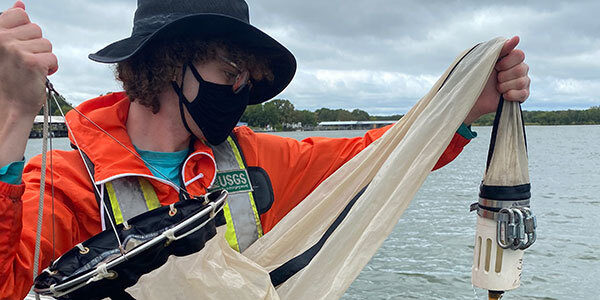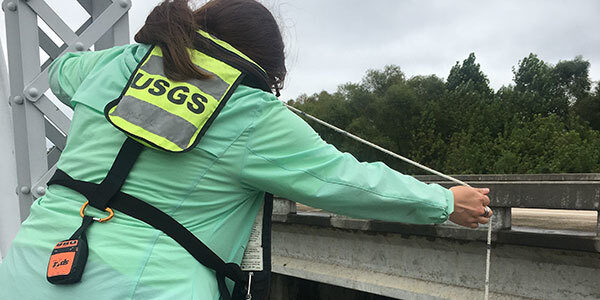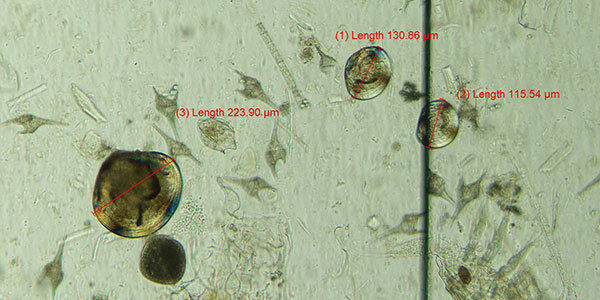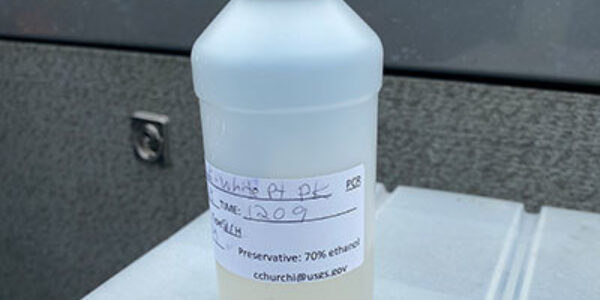Dreissenid mussel reproduction commonly occurs semiannually during distinct spawning events, typically in spring and autumn. Veligers are the microscopic, free-swimming larval stage of the zebra mussel. Veligers can be transported overland on boats/trailers and downstream through dams and other water outlets.
We currently (2024) collect samples at more than 70 individual sampling sites across 12 lake/reservoir and 2 creek/river study areas. Each study area has dedicated sampling gear to prevent cross contamination.

Fine mesh plankton tow-net sampling is done from boats, typically in spring through autumn when veligers are expected to be present. These samples are used to monitor for the presence of dreissenid mussel veligers and DNA.
Collection of water samples is done in areas of likely introduction of veligers – boat ramps and marinas at reservoirs and raw-water sampling points at water-treatment plants. A minimum of three replicate water samples are collected at each site.

USGS personnel monitor several river and creek stretches that are near established zebra mussel populations or infrastructures of interest. Fine mesh nets, often lowered from bridges, are used for collecting veliger samples, using water velocity to determine sample collection time for a set volume of water.
Collection of water samples is done from selected bridge crossings at riverine sites.

Samples are transported to the USGS North Texas Program laboratory in Fort Worth and analyzed using cross-polarized light microscopy to identify veliger presence and developmental stages, determine veliger concentrations per liter, and quantify shell lengths.

Select replicate samples are preserved in 70-percent ethanol and sent to a separate laboratory for polymerase chain reaction (PCR) analysis, which targets species-specific genetic material (DNA) to identify and quantify the presence of zebra and quagga mussel DNA in the water samples.
A positive eDNA detection is not indicative of zebra mussel presence in a water body.